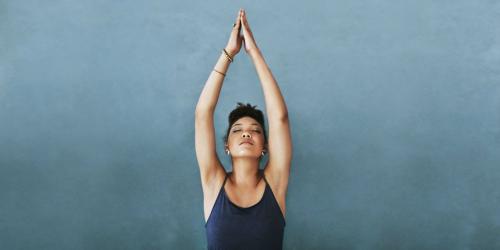It is useless to gorge on drugs to curb anxiety and its procession of psychosomatic disorders ( insomnia , heartburn, nervous palpitations, migraines ...), but also fight against the extra pounds.
Taking control of your breathing can be enough to cope with the stress of everyday life and regain energy. You are told everything about different breathing techniques that work.
- Cardiac coherence to replace anxiolytics
Among the various techniques available to all, cardiac coherence is one of the most effective and easiest to implement.
Its principle is based on a breathing frequency 6, six breaths per minute for three minutes. Usually, our respiratory rate is twice as fast.
In addition, "his pace is chaotic, constantly changing," says Dr. O'Hare. It adapts to our activity (physical effort, rest ...) and external events to which we are subjected (verbal aggression, surprise effect ...). The heart thus undergoes permanent accelerations and decelerations.
Result: the energy circulates badly. Adrenaline takes over and this is the beginning of the negative spiral. At frequency 6, everything is different. The heart rate synchronizes with the respiratory rhythm because the brain interprets this state as emotionally neutral, as the balance between the sympathetic and parasympathetic system is perfect. As a result, the body begins to function economically. He gets tired less quickly. Its resistance to diseases and its intellectual performance (memorization, decision-making, creativity) are reinforced. All this is physiologically explained.
A few minutes of cardiac coherence "induce changes in the immune and hormonal levels," says the specialist.
A decrease in the level of cortisol (hormone responsible for the deleterious effects of stress), an increase in DHEA (anti-stress hormone) and an increase in immunoglobulin A (IgA, essential factors of resistance to attacks) that persist in the blood up to six hours after exercise ".
According to clinical studies carried out over the last ten years by the American HeartMath Institute, its regular practice would also reduce the blood pressure of hypertensives, blood cholesterol levels, as well as the perception of pain, especially in cases of osteoarthritis or osteoarthritis. acute arthritis.
Cardiac coherence in practice: sitting on a chair, adopt conscious abdominal breathing. Then slow down the pace by increasing the amplitude. To reach frequency 6, use the wave technique explained previously. Draw each of them should take you ten seconds, five seconds for inspiration and five seconds for expiration. In three minutes (use a timer), you must have drawn eighteen. After two weeks of training, with three daily sessions (morning, noon and night), you will be able to find the right rhythm. And the benefits will not be long.
- Abdominal breathing to fight overweight
Chronic stress places the body in "danger mode". To cope, the adrenal glands release more cortisol, which causes muscle loss and fat gain, especially in the belly, hips and upper thighs.
By imposing a return to calm, the deep abdominal breathing moderates this influx of hormone which is reflected on the scale.
It also allows you to better manage your emotions, thus avoiding unwanted "cracking", and improve the quality of your sleep , phase during which the adipocytes destock triglycerides stored during the day.
- Pranayama to release vital energy
For the Orientals, to breathe is to circulate in oneself the vital energy, the breath of life (the qi) that connects us to the universe. Mastering one's breath goes well beyond the oxygenation of the lungs.
Symbolically, this corresponds to opening up one's body and one's soul, a form of meditation . Hence the importance of "just" breathing in the practice of yoga , tai chi chuan or qi gong .
The exercises of pranayama, this Indian art of breath that calms the mind to achieve inner peace, are interesting for developing one's perception of the benefits of breathing. The smartphone application, Universal Breathing, allows you to learn the basic techniques at home.




